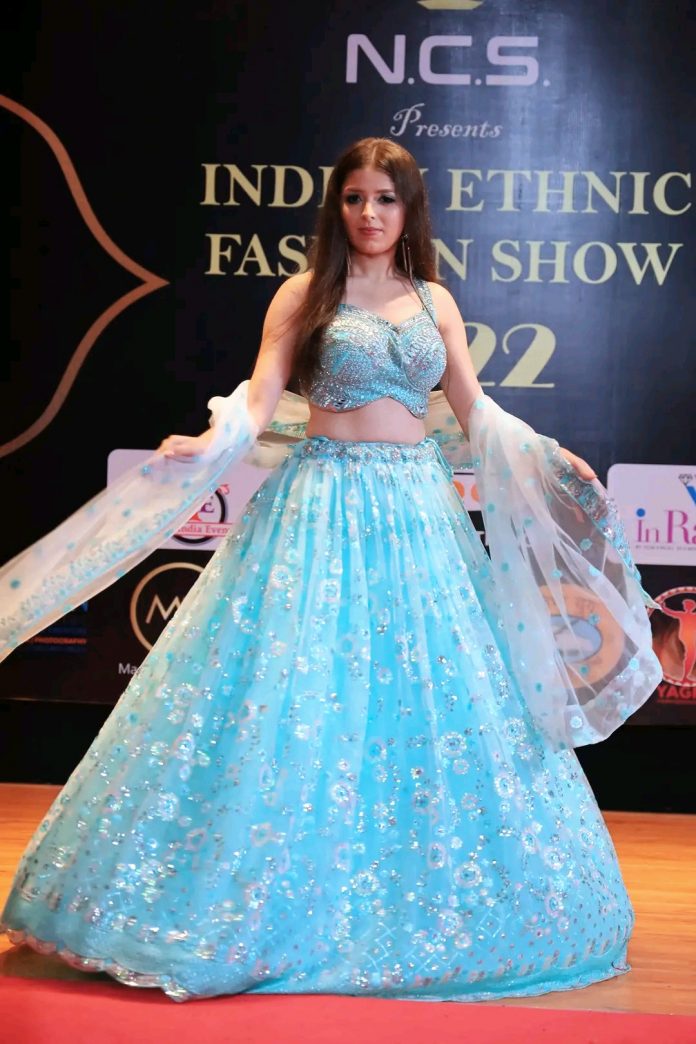By Dwijendra Kumar
Pic Courtesy: NCS, Vikas Maurya
Excavations that unearthed ancient paintings and structures prove that Indian women were as fashionable as their Western counterpart was.
Men’s clothing consisted of a loin cloth during the Indus Valley civilization, whereas women wore jewellery to cover their upper body. It was assumed that the better the jewellery, the higher the status of the women in the society.
However, things changed drastically with introduction of separate clothes for the upper and the lower body of women, which is still prevalent today.
The characteristic Rajasthani style of donning saris evolved during the medieval period. After this,tailored clothes called salwar kameez inspired by Mughals became prevalent.
A stark change came in the manner in which people wore their clothes during the British rule. Women took inspiration from the Western world to style their blouses, whereas men began to wear suits.
During the 1920s, a drastic change was observed in the manner in which cholis were worn by women. At that time, cholis were made of cotton, silk, lace and satin materials, and they used to be long-sleeved.
The bolder women used to wear short sleeves. The blouse used to be covered and long. The sari used to be worn in either Gujarati style, or the normal way. Pallu was used to cover one’s head.
During the 1930’s, dark shades of body hugging dresses became widely prevalent and popular. In 1932,Catherine Courtney of Pompadour Gowns organized India’s first fashion show in Pune, which consisted of European outfits and models. It was staged to help local charities. The show was done again at the TajMahal.
By 1940’s, due to the freedom struggle against the British, Khadi and South Indian silks were given precedence over Japanese georgette, imported silks and chiffons.
Pompadour presented the first Indian model, Shakuntala Sharma, in 1940, and she became highly popular both in India and in England.
Fashionable women wearing balloon skirts and narrow waist outfits dominated the 1950’s fashion scene.Fashion shows began to be organized for entertainment as well as to generate funds.
In 1960’s, the length of the kameez rose a few inches above the knee. Skin-tight and sleeveless kameez were worn over churidar salwar. Front-knotted choli were introduced at this time. Synthetics and nylon centered the world of Indian fashion, and polyester and printed nylons ousted the heavily bordered saris.The sari included a border, which gave it a drape.
Jeannie Naoroju got the credit of organizing the first professional fashion show in India in 1959. Meanwhile, in 1965, Chandu Morarjee opened India’s ‘Dagina’ in Bombay. The boutique sold inexpensive items also, which appealed to Mumbiakars and the foreigners as well.
The pantsuit became a fashion trend by the 1970’s. At the same time, the Gujarati style of wearing sari ulta-pallu way became very popular. The period also saw drastic change in Govt policies towards export of textile items. It encouraged mills and companies engaged in exports.
Delhi-based Nalini Saris entered the Bombay market with its printed Saris. Tata Textiles and Binny were the leading textiles mills during this time. Their continued innovations ensured that the products were at par with international standards. They are given the credit for introducing Indian textiles in the world’s fashion map.
The government also changed their policy related to export of textiles and garments in the 1970’s. They began to acknowledge the importance of exporting mills and units.
Designer labels entered the Indian fashion scene during the mid-1980s and established high-fashion garments. New designs and patterns were introduced as well. The corporate look and power dressing became the norm.
Hemant Trivedi, a famous choreographer and stylist, brought a revolution in fashion shows in India by focusing more on garments.
1990s saw Lubna Adams also organized multiple fashion shows and gained prominence in this field. During the period, Indian designers began to make their presence felt and magazines exclusively overing textiles, garments and fashion began to be publishes.
The last two decades 2000-2020 saw India registering exponential growth in export of textiles and apparels. Designers like Abrham and Thakore, Ritu Kumar, Ritu Beri etc opened their stores abroad.
Recently Union Textile Ministry has set target of increasing the export of textiles to $100 Billion.To achieve same India has also signed FTAs with UAE and Australia providing the much needed opportunity to the textile sector of India to meet its ambitious target.
Further, the Govt has announced to provide tax rebates through the scheme of RoSCTL to those in the textile industry. Ably backed up by major policy initiatives such as PLI scheme , RoScTL, skill development initiatives and the 7 mega textile parks, Indian textile industry now has the wherewithal to ensure an exponential growth in the exports and achieve the target of $100 Billion!








